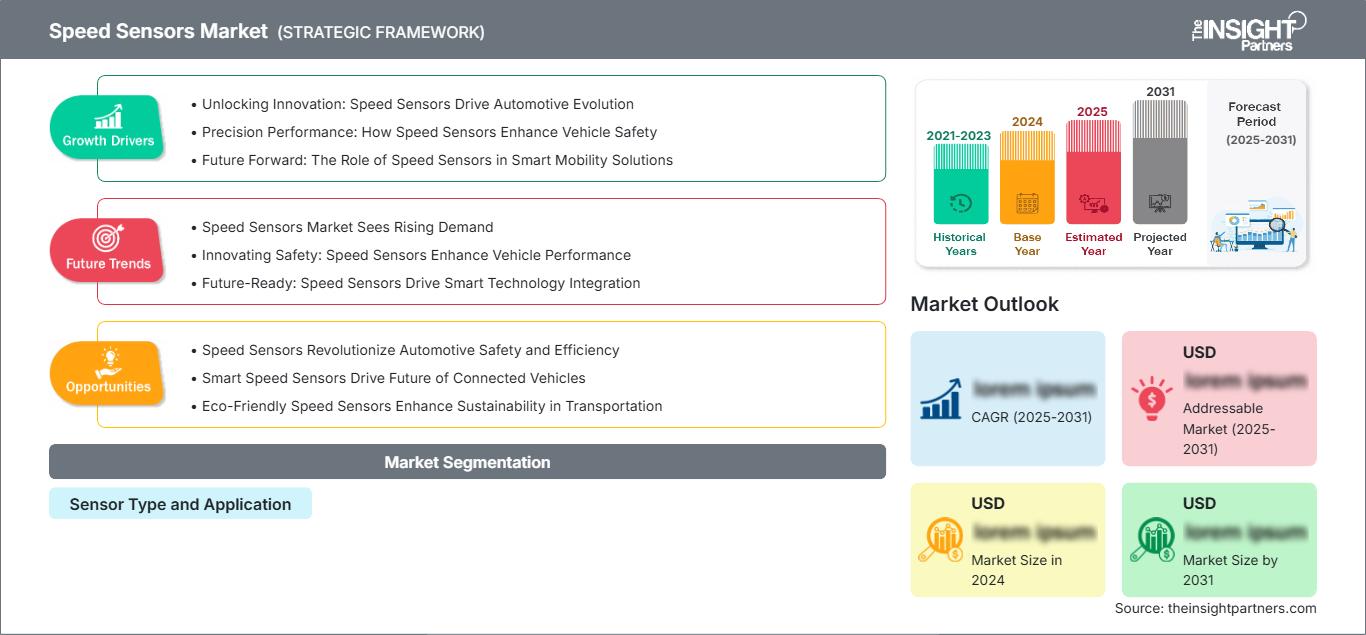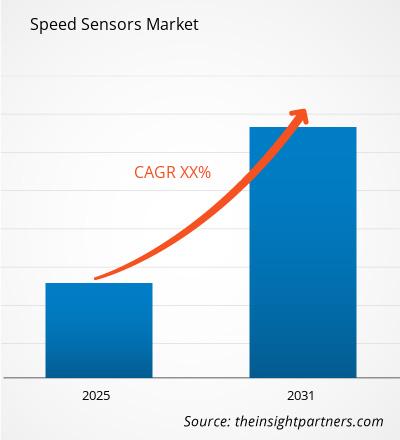ページ更新済み :
May 2018
速度センサーは、車両の速度を読み取るための装置です。速度センサーは自動車電子システムの重要な要素です。車両の効率、環境規制、セキュリティ基準を確認するために、これらの電子システムが使用されています。消費者の安全、燃費、インフォテインメントアプリケーションの需要を満たすため、大手自動車メーカーは車両にハイエンドオプションを導入しています。排出ガスと安全に関する厳格な政府規制は、世界の速度センサー市場の主要な推進力です。車両の電子機器の増加に伴い、車両に使用される速度センサーも増加しています。世界的な自動車生産の増加、自動車の技術革新への需要、そして変化する顧客の嗜好は、世界の速度センサー市場に影響を与える主要な要因です。排出ガスと燃費に関する規制は世界のいくつかの地域で厳しくなっており、速度センサーは規制維持において重要な役割を果たすと考えられています。世界中の政府は、乗客のための安全規則をますます施行しています。また、人々は安全性をより懸念しており、アンチロックブレーキ、エアバッグ、衝突回避などの安全対策を求めています。これらの安全対策の採用拡大は、今後、世界の速度センサー市場を牽引すると予想されます。世界の速度センサー市場の需要に影響を与えるその他の要因としては、駐車支援、衝突回避システム、先進運転支援システム(ADAS)、車線逸脱警報(Lane Deparing Warning)、その他の安全アプリケーションにおける画像センサーの利用増加などが挙げられます。一方で、MEMS(Micro Electro Mechanical Systems)の標準化された製造プロセスの欠如や価格負担の増大といった要因は、世界の速度センサー市場の成長を阻む可能性があります。しかしながら、市場における速度センサーの需要増加は、メーカーに製品価格の値下げ圧力をかけています。世界の速度センサー市場は、センサーの種類別に、NOXセンサー、位置センサー、圧力センサー、慣性センサー、温度センサー、酸素センサー、画像センサー、その他のセンサーに分類されています。さらに、用途別には、パワートレイン、安全・制御、シャーシ、ボディエレクトロニクス、テレマティクス、排気システム、その他に分類されています。世界のスピードセンサー市場は、地域別に北米、ヨーロッパ、アジア太平洋、南米、中東およびアフリカに分かれています。ヨーロッパは世界のスピードセンサー市場で最大のシェアを占めています。物流業界の高成長、安全性に対する意識の高まり、およびヨーロッパでの低排出ゾーンの設定が、世界のスピードセンサー市場の成長を後押ししています。アジア太平洋地域は、最も急速に成長しているスピードセンサー市場です。安全機能に関する政府の規制や先進技術の採用増加が、この成長の理由の一部です。ヘッドライト レベリング、自動ワイパー、自動気候制御、駐車支援などの他の要因も市場の成長に貢献しています。世界のスピードセンサー市場で活動している主要企業には、Robert Bosch GmbH、Sensata Technologies Inc.、Infineon Technologies AG、Standex Electronics、Freescale Semiconductor Inc.、Denso Corporation、旭化成株式会社、Continental AG、Analog Devices Inc.、AMETEK Inc.、Honeywell、Sensata、Ford Corporation、Delphi Automotive、General Electricなどがあります。


要件に合わせてレポートをカスタマイズ
レポートの一部、国レベルの分析、Excelデータパックなどを含め、スタートアップ&大学向けに特別オファーや割引もご利用いただけます(無償)
スピードセンサー市場: 戦略的洞察

-
このレポートの主要な市場動向を入手してください。この無料サンプルには、市場動向から見積もりや予測に至るまでのデータ分析が含まれます。
スピードセンサー市場の地域別分析
予測期間を通じてスピードセンサー市場に影響を与える地域的なトレンドと要因については、The Insight Partnersのアナリストが詳細に解説しています。このセクションでは、北米、ヨーロッパ、アジア太平洋、中東・アフリカ、中南米におけるスピードセンサー市場のセグメントと地域についても解説しています。
スピードセンサー市場レポートの範囲
| レポート属性 | 詳細 |
|---|---|
| の市場規模 2024 | US$ XX million |
| 市場規模別 2031 | US$ XX Million |
| 世界的なCAGR (2025 - 2031) | XX% |
| 過去データ | 2021-2023 |
| 予測期間 | 2025-2031 |
| 対象セグメント | By センサーの種類と用途 |
| 対象地域と国 |
北米
|
| 市場リーダーと主要企業の概要 |
|
スピードセンサー市場のプレーヤー密度:ビジネスダイナミクスへの影響を理解する
スピードセンサー市場は、消費者の嗜好の変化、技術の進歩、製品メリットへの認知度の高まりといった要因によるエンドユーザー需要の増加に牽引され、急速に成長しています。需要の増加に伴い、企業は製品ラインナップの拡充、消費者ニーズへの対応のためのイノベーション、そして新たなトレンドの活用を進めており、これが市場の成長をさらに加速させています。

- 入手 スピードセンサー市場 主要プレーヤーの概要
- 過去2年間の分析、基準年、CAGRによる予測(7年間)
- PEST分析とSWOT分析
- 市場規模価値/数量 - 世界、地域、国
- 業界と競争環境
- Excel データセット
最新レポート
関連レポート
お客様の声
購入理由
- 情報に基づいた意思決定
- 市場動向の理解
- 競合分析
- 顧客インサイト
- 市場予測
- リスク軽減
- 戦略計画
- 投資の正当性
- 新興市場の特定
- マーケティング戦略の強化
- 業務効率の向上
- 規制動向への対応
お客様事例































87-673-9708

ISO 9001:2015





 無料サンプルを入手 - スピードセンサー市場
無料サンプルを入手 - スピードセンサー市場